Julian Rossbroich
Decoding finger velocity from cortical spike trains with recurrent spiking neural networks
Sep 03, 2024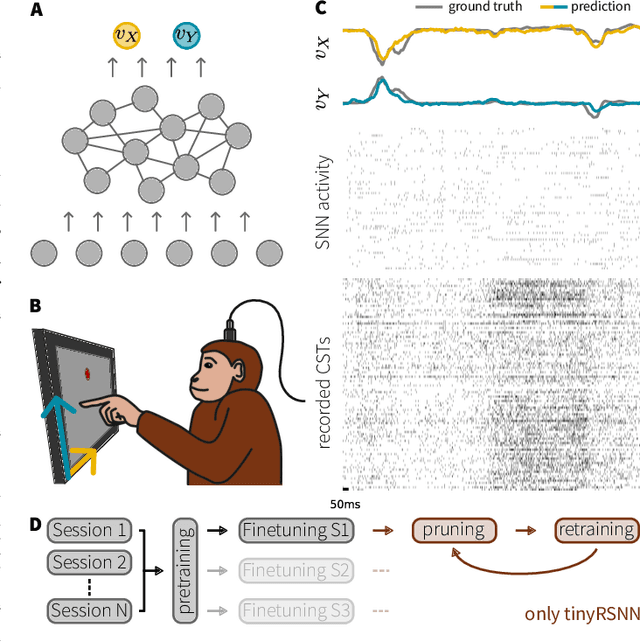
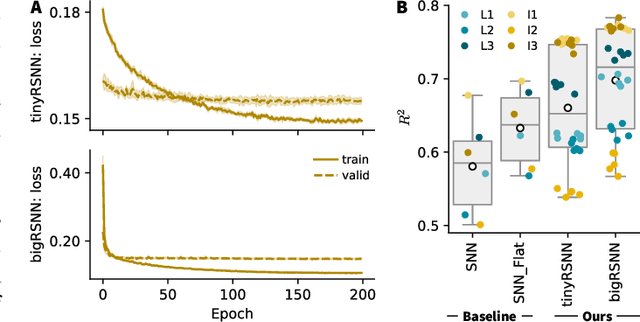
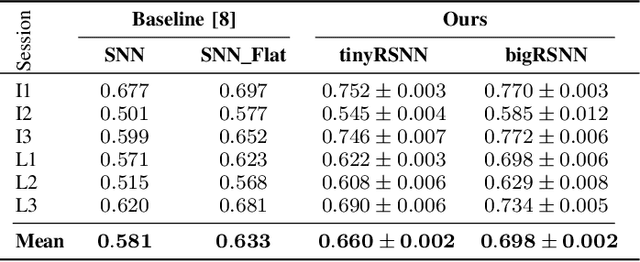
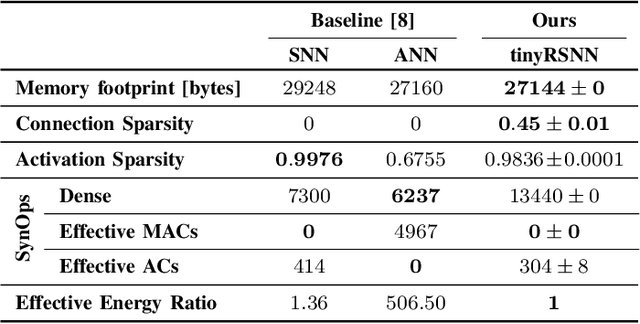
Abstract:Invasive cortical brain-machine interfaces (BMIs) can significantly improve the life quality of motor-impaired patients. Nonetheless, externally mounted pedestals pose an infection risk, which calls for fully implanted systems. Such systems, however, must meet strict latency and energy constraints while providing reliable decoding performance. While recurrent spiking neural networks (RSNNs) are ideally suited for ultra-low-power, low-latency processing on neuromorphic hardware, it is unclear whether they meet the above requirements. To address this question, we trained RSNNs to decode finger velocity from cortical spike trains (CSTs) of two macaque monkeys. First, we found that a large RSNN model outperformed existing feedforward spiking neural networks (SNNs) and artificial neural networks (ANNs) in terms of their decoding accuracy. We next developed a tiny RSNN with a smaller memory footprint, low firing rates, and sparse connectivity. Despite its reduced computational requirements, the resulting model performed substantially better than existing SNN and ANN decoders. Our results thus demonstrate that RSNNs offer competitive CST decoding performance under tight resource constraints and are promising candidates for fully implanted ultra-low-power BMIs with the potential to revolutionize patient care.
Dis-inhibitory neuronal circuits can control the sign of synaptic plasticity
Oct 30, 2023

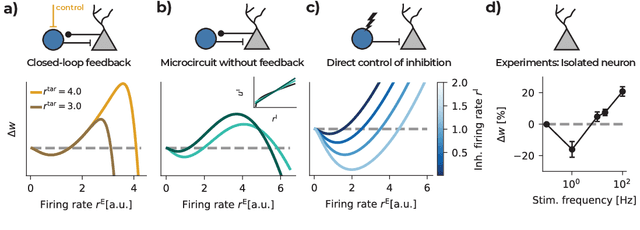

Abstract:How neuronal circuits achieve credit assignment remains a central unsolved question in systems neuroscience. Various studies have suggested plausible solutions for back-propagating error signals through multi-layer networks. These purely functionally motivated models assume distinct neuronal compartments to represent local error signals that determine the sign of synaptic plasticity. However, this explicit error modulation is inconsistent with phenomenological plasticity models in which the sign depends primarily on postsynaptic activity. Here we show how a plausible microcircuit model and Hebbian learning rule derived within an adaptive control theory framework can resolve this discrepancy. Assuming errors are encoded in top-down dis-inhibitory synaptic afferents, we show that error-modulated learning emerges naturally at the circuit level when recurrent inhibition explicitly influences Hebbian plasticity. The same learning rule accounts for experimentally observed plasticity in the absence of inhibition and performs comparably to back-propagation of error (BP) on several non-linearly separable benchmarks. Our findings bridge the gap between functional and experimentally observed plasticity rules and make concrete predictions on inhibitory modulation of excitatory plasticity.
Fluctuation-driven initialization for spiking neural network training
Jun 21, 2022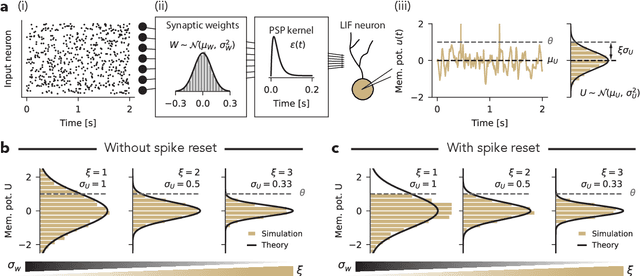

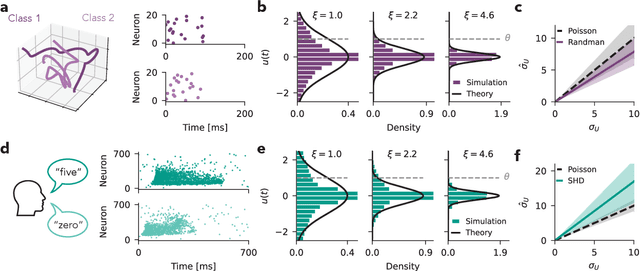

Abstract:Spiking neural networks (SNNs) underlie low-power, fault-tolerant information processing in the brain and could constitute a power-efficient alternative to conventional deep neural networks when implemented on suitable neuromorphic hardware accelerators. However, instantiating SNNs that solve complex computational tasks in-silico remains a significant challenge. Surrogate gradient (SG) techniques have emerged as a standard solution for training SNNs end-to-end. Still, their success depends on synaptic weight initialization, similar to conventional artificial neural networks (ANNs). Yet, unlike in the case of ANNs, it remains elusive what constitutes a good initial state for an SNN. Here, we develop a general initialization strategy for SNNs inspired by the fluctuation-driven regime commonly observed in the brain. Specifically, we derive practical solutions for data-dependent weight initialization that ensure fluctuation-driven firing in the widely used leaky integrate-and-fire (LIF) neurons. We empirically show that SNNs initialized following our strategy exhibit superior learning performance when trained with SGs. These findings generalize across several datasets and SNN architectures, including fully connected, deep convolutional, recurrent, and more biologically plausible SNNs obeying Dale's law. Thus fluctuation-driven initialization provides a practical, versatile, and easy-to-implement strategy for improving SNN training performance on diverse tasks in neuromorphic engineering and computational neuroscience.
 Add to Chrome
Add to Chrome Add to Firefox
Add to Firefox Add to Edge
Add to Edge